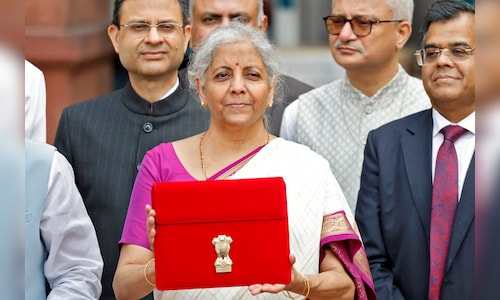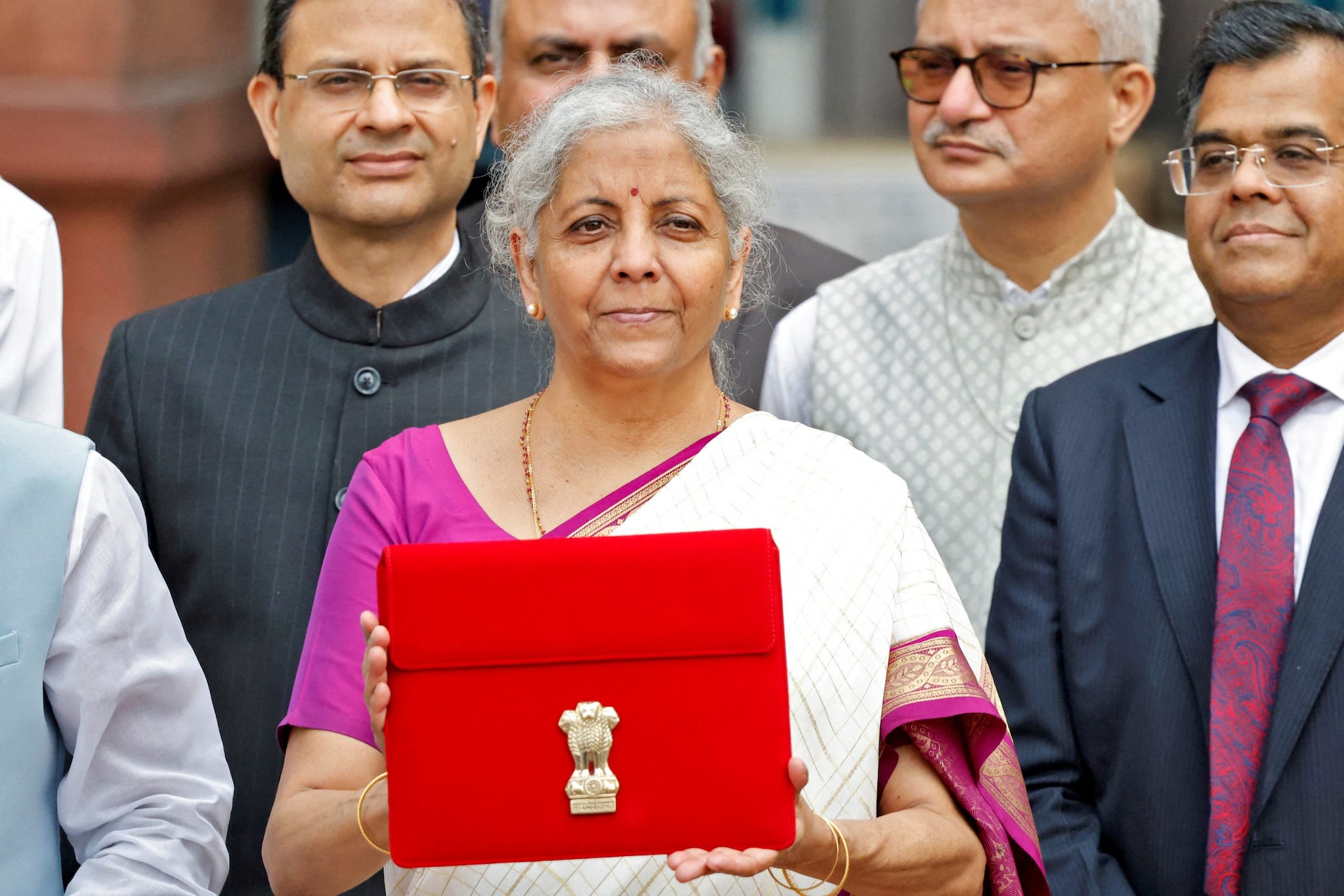

Amit Maheshwari, Tax Partner, AKM Global, a tax and consulting firm says, “The upcoming budget is likely to create a lot of anticipation among Indian taxpayers, with high hopes for measures that will ease the common man’s financial burden. One key expectation like always is an increase in the basic exemption limit, may be increasing it to ₹5 lakh and it is needed to provide much-needed relief for lower and middle-income earners especially our youth who have just stared their jobs. Alongside this, there should be a reduction in tax rates across various income slabs, leaving more disposable income in the hands of individuals and increasing consumption levels. We expect the new tax regime to be made more attractive by increasing the standard deduction or introducing new deductions for expenses like education and healthcare.”
Not just this, expectations are also “to further encourage investment, increase in the 80C deduction limit should finally be done as this limit is same since 10 years now. Addressing the housing sector is also crucial, with expectations for an increased deduction for home loan interest, particularly for first-time buyers, and further incentives to promote affordable housing. A greater flexibility to switch between regimes should be provided, grandfathering existing investments made under the old regime, and clarifying the tax implications of each option would be better. For instance, life insurance premium would only be allowed if life insurance is taken before at the time when the old regime was also there, if the old regime is removed now,” Maheshwari added.
Not just the common man, even the start-up world is looking at some breaks from the government. Nishant Kumar , Co-Founder Earthytweens says, “We anticipate the upcoming budget to strengthen India’s startup ecosystem. The sector is also optimistic about the introduction of tax incentives, enhanced access to credit, and forward-looking policies aimed at fostering innovation and generating employment. With the right government support, startups have the potential to drive significant economic growth and elevate India as a global leader in innovation.”
Further on making investments more attractive, Ankur Jalan, CEO, Golden Growth Fund (GGF) says, “Real estate focused AIFs have huge opportunity to tap the untapped potential of the vast real estate landscape in the country by opening up not only funding avenues for development but also wealth creation for investors. The Budget must endeavour to achieve parity in capital gains on listed and unlisted instruments so as to make it more attractive for both domestic and foreign investors. Also ‘gains from investment’ must be classified on similar lines across instruments so that AIFs too enjoy the benefit.”
Given that the government is likely to address the issues which are leading to slowdown in the urban demand, Garvit Tiwari, Director and Co-Founder of InfraMantra adds, “Income tax cut must be the Budget’s top priority. Reduction in GST on both construction material and under-construction properties will help developers to reduce the price of homes. Additionally, land and labour reforms will nudge the private sector to invest in India and help create jobs. Raising the affordable housing limit to ₹1 crore will help bring fence-sitters into the real estate market and drive demand in the sector.”
Shravan Shetty, Managing Director, Primus Partners says, “Given the requirement to increase the expenditure while reducing the deficit as percentage of GDP increasing revenue receipts is the best option for the government. The indirect tax collection has shown considerable growth due to formalisation of industry driven by GST implementation. But over the last few months seeing stabilisation of collection indicating limited scope for growth. Further enhancing the direct tax system by encouraging adoption of new tax system and increase adherence would be key to increase revenue. With only 10.4 crore tax payers (less than 10% of Indian population) there is tremendous scope to increase Tax base and Direct tax revenue.”
But, will this be enough? Will some tax breaks be able to revive the slowing economy?
Some of these key questions were answered by Akhil Chandna, Partner, Grant Thornton Bharat. He says that “As the 2025 Union Budget draws closer, taxpayers are hopeful for measures that address pressing financial and economic concerns. High on the wish list is a reduction in personal income tax rates to increase disposable income and support consumer spending. There are also expectations for new tax incentives for affordable housing, potentially offering relief to first-time homebuyers and stimulating the real estate sector. Calls to introduce more tax-saving provisions and allowing reasonable deductions/exemptions under new tax regime reflect the middle class’s need for greater financial support. A simplified and transparent tax system, achieved through reforms to the Income-tax Act, remains a top priority to ease compliance and reduce disputes. The upcoming budget is poised to balance immediate relief with long-term reforms, shaping a more transparent and efficient tax ecosystem.”
“Simplify TDS compliance for home buyers where seller is a Non-Resident Individual (NRI), allow tax payments / tax refunds from /to overseas bank accounts, increase the income threshold for applicability of advance tax provisions, give relief for Foreign Tax Credit (FTC) and Short Stay Exemption at the time of withholding, amend valuation rules for perquisite in the form of electric vehicles (Rule 3) and reinstate deduction for interest paid on loan taken for purchase of electric vehicle, robust Appellate Disposal Process, reduction in tax rates and widening the slabs to reduce personal income tax rates, particularly for individuals earning up to ₹15 lakh annually. This reduction is expected under both old regime and new regime. Additionally an increase in the basic exemption limit is expected by the small taxpayers to give major tax relief. It will reduce the mandatory obligation of filing the tax returns and thereby reducing their compliance costs as well. Also, reduction in the surcharge rates is a need for the high income earners to reduce the maximum marginal rate, could be seen in the budget,” Chandna added.
Supporting some of these recommendations and expectations, Divya Baweja, Partner, Deloitte says “The expectations include that there will be ease of tax compliance for purchase of property from Non-Residents (NRs), enabling tax payments from overseas bank accounts (removing the requirement of having a bank account in India), non-residents are also seeking credit of tax refund to overseas bank accounts. Not just this, the government is likely to give clarity in taxation of stock options. Section 17(2) provides for taxing stock award benefits as a perquisite. However, the section lacks clarity regarding the taxation of stock awards in the case of NR employees who have rendered a part of services overseas during the grant period to vest. The principle that the benefit accrues over the vesting period is indicated based on court rulings and OECD guidelines. However, in the absence of clear guidance, the claim of the taxpayers is denied at the assessment stage by the tax officer.”
Baweja also added that “The government could also get in valuation rules for perquisite in the form of electric vehicles (Rule 3). The Rule 3 of the Income tax rules provides the valuation of motor car benefits, where the employer reimburses running and maintenance expenses. The valuation principles consider the cubic capacity of the engine to determine the perquisite value and typically cover only conventional fuel cars; no separate criteria have been laid out with respect to electric vehicles.”
Expressing some of the crucial expectations, Chandrajit Banerjee, Director General, CII said, “the government can consider minimise Income Tax litigation by unclogging the Commissioner of Income Tax (Appeals) [CIT(A)] pendency; by improving Alternate Dispute Resolution (ADR) mechanisms such as Advance Pricing Agreement (APA), through Boards for Advance Rulings (BAR) and Dispute Resolution Scheme (DRS) and can consider improving interface with Central Processing Centre to address issues faced by taxpayers along with rationalization of withholding tax provisions to reduce compliance, characterisation disputes, working capital blockage etc.”
Quipping similar sentiments, Sameer Gupta, National Tax Leader, EY India, said, “While a full comprehensive review of the direct tax code may take time, we might see some initial steps toward its implementation in this Budget. I also hope for a reduction in personal income tax, particularly for the lower-income groups, to provide relief and stimulate demand. For businesses, particularly SMEs, reducing the complexity of tax compliance is critical. Streamlining TDS rates into fewer categories and eliminating redundant provisions will ease the administrative burden, allowing businesses to focus on growth and innovation.”
Commenting on India’s financial ambitions, Sameer said, “The International Financial Services Centre (IFSC) at GIFT City is at the heart of India’s ambition to become a global financial hub. But to truly reach its potential, we need to tackle some pressing challenges like provide tax framework for issuance of Offshore Derivative Instruments by non-banking units on same lines as provided to banks in the past, clarify characterisation of securities listed on the IFSC stock exchanges as ‘capital asset’, non-applicability of deemed dividend provisions to amounts received by IFSC based treasury companies and prescribe separate tax chapter for IFSC in the new tax code (aiming at simplifying the existing provisions).”
EY feels that to achieve sustainable growth in FY26, the Government must prioritise reducing the fiscal deficit to 4.5% of GDP in FY26 while reducing the debt-to-GDP ratio, which stands at 54.4%, well above the FRBM target of 40%.
“A medium-term real GDP growth target of 6.5% or higher will require boosting the aggregate investment rate (GFCF) measured at constant prices to 34%. This can be achieved by increasing Government’s capital expenditure, improving capital efficiency and encouraging states to enhance their investment spending. To stimulate private sector investment, a progressive reduction in interest rates should be considered. Additionally, targeted employment schemes should be fast-tracked to uplift urban demand and support economic momentum in FY26,” Sameer said.
To fostering business and innovation, EY expects the Budget to enhance fiscal management, public spending, and create an environment conducive to business and innovation. India Inc expects reforms to facilitate business restructuring by extending benefit of carry forward and set-off of accumulated loss and unabsorbed depreciation given under section 72A of ITA to service and trading organizations, particularly DPIIT-registered start-ups.
“Furthermore, this Budget presents a critical opportunity to enhance GIFT IFSC’s position as a global financial hub through targeted tax and regulatory measures. Key expectations include announcements for enabling tax-neutral relocation of holding company structures to GIFT IFSC, as recommended by the Committee on Onshoring the Indian Innovation and facilitating the creation of a commodity trading hub for global supply chains similar to that in Dubai and Singapore. Additionally, extending a tax framework for ODIs by non-banks especially broker-dealers similar to that provided to International Banking Units (IBUs) will boost the fund management ecosystem at GIFT IFSC,” Sameer added.
Talking on other tax measures, EY says that the government is in a mode to provide taxpayer-friendly measures, which could include “such as no penalties on debatable issues under Section 270A if in case taxpayer has given bonafide explanation and disclosed all material facts. Further, the new regime treatment of buybacks as dividend-cum-capital loss should not be applied to buyback out of share premium or buyback out of proceeds of another issue of shares/security as it will lead to artificial taxation of capital receipt as dividend income.
On the reforms for personal tax relief, EY says, “The upcoming budget should focus on personal tax relief by raising the basic exemption limit in the new tax regime from ₹3 lakhs to ₹5 lakhs and reducing tax rates. Clarifications on the perquisite valuation for EVs and clear guidelines for the taxation of cryptocurrency and non-fungible tokens (NFT), including the treatment of virtual digital asset (VDA) losses, are needed. The cap on the set-off of house property losses against other heads should also be removed. Including tier-2 cities like Hyderabad, Pune, Bengaluru, and Ahmedabad in the HRA exemption at 50% will provide tax parity. Further simplification is needed for employer contributions exceeding ₹7.5 lakhs to specified funds. Deferring TDS on PF interest (above ₹2.5 lakhs) until the withdrawal stage will reduce compliance burdens. The ESOP tax deferment benefit should be extended to all employers, allowing tax payment at the sale stage.”
To be seen is what exactly does the union budget unveil when the Finance Minister Nirmala Sitharaman stands up in the Parliament on 1st February to announce her next budget.



